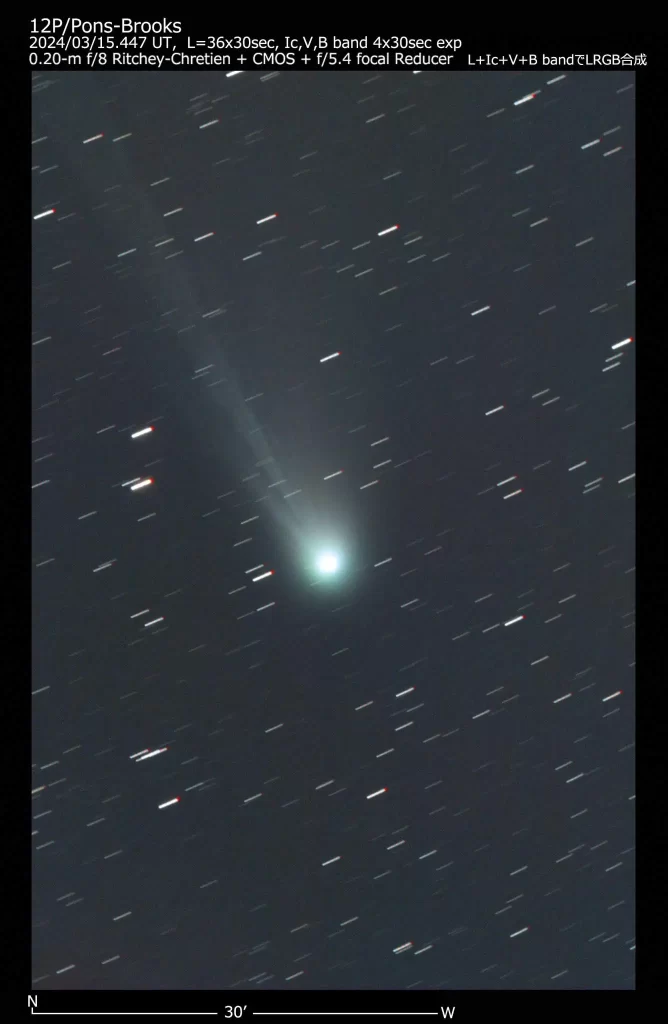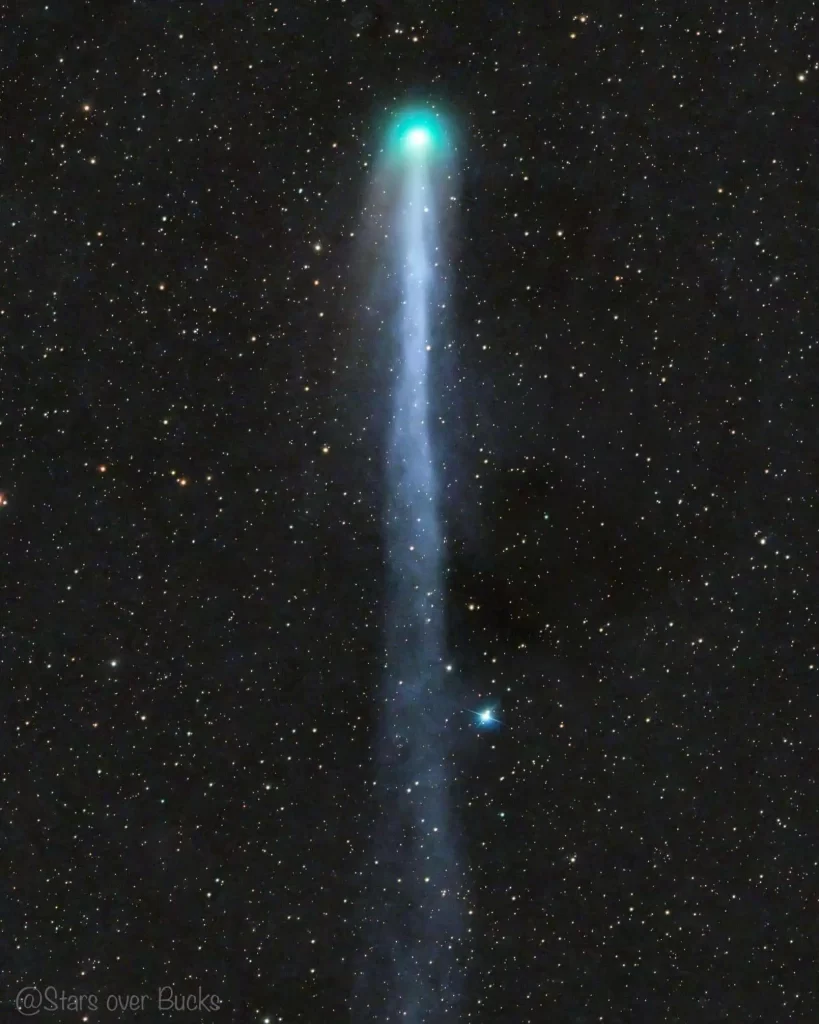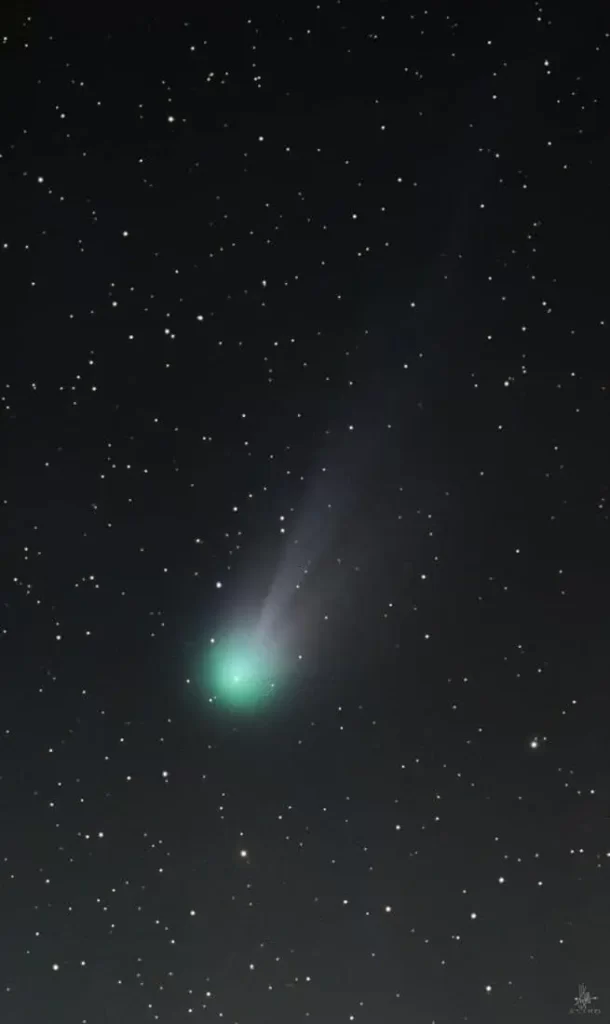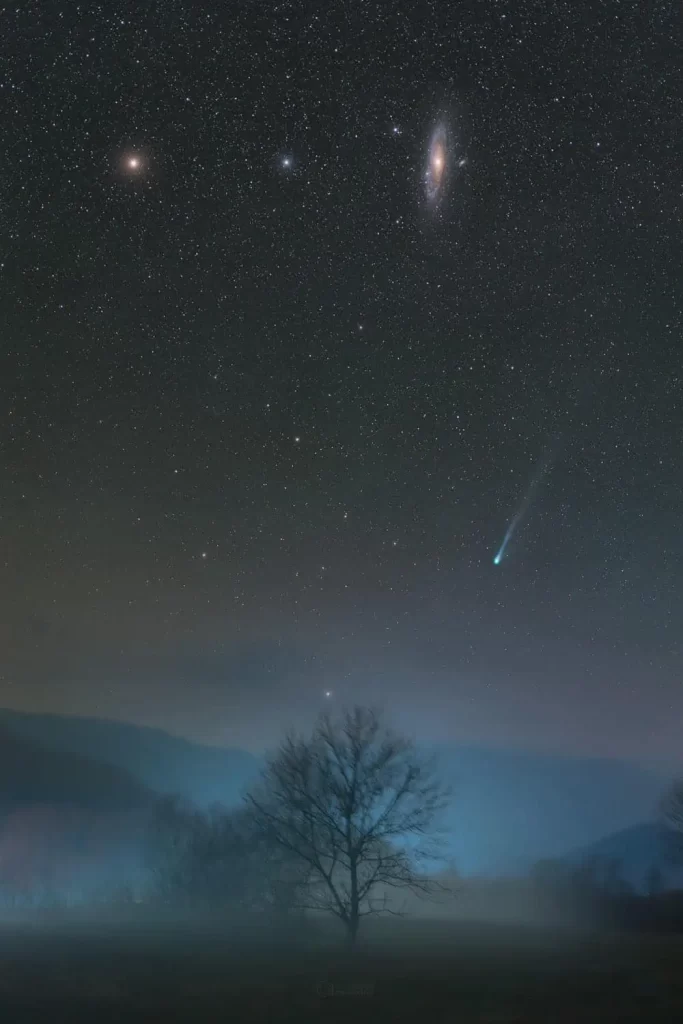12P/Pons-Brooks: A Halley-Type Comet
12P/Pons-Brooks is a periodic comet that orbits the Sun every 71 years, falling within the Halley-type comet category (20 years < period < 200 years).
Upcoming Perihelion Passage
The next perihelion passage of 12P/Pons-Brooks is expected on April 21, 2024, with its closest approach to Earth being at a distance of 1.54 astronomical units (230 million km) on June 2, 2024.
Comet Characteristics
The comet’s nucleus is estimated to have a diameter of around 30 km, presuming minimal dust and gas production during the 2020 photometry observations.
Meteor Shower Association
There is a possibility that 12P/Pons-Brooks serves as the parent body of the December κ-Draconids meteor shower.
For public viewing information from Colombo, Sri Lanka (LK), please visit https://theskylive.com/riseset?obj=12p.
Embarking on a Celestial Odyssey with the ‘Everest Comet’
Let’s Join an exciting journey through the cosmos as we witness the comet 12P/Pons-Brooks, affectionately known as Pons-Brooks, gracing the inner reaches of our Solar System after more than 70 years. This cosmic wonder, comparable in size to the majestic Mount Everest, is currently captivating astronomers and fellow sky watchers with its brilliant presence.
A Stellar Marvel to Behold
As an avid enthusiast of the night sky, I am in awe of the sheer grandeur of this icy giant, acclaimed by astronomer Dr. Paul Strøm as “one of the brightest periodic comets” we have the privilege to observe. With characteristics reminiscent of Halley-type comets, Pons-Brooks completes its solar circuit every 71.3 years, with its last appearance noted back in 1954.

Tracing Back Centuries of Celestial Wonders
Delving into the historical records surrounding this comet, I am fascinated by its origins dating back to sightings as early as 1385. The tales of its discovery by Jean-Louis Pons and subsequent acknowledgment by William Robert Brooks add layers of intrigue to this cosmic saga.
Guiding Your Stargazing Expedition
For fellow enthusiasts eager to partake in this celestial spectacle, mark your calendars for a viewing opportunity stretching from today until April 21, 2024, with the best visibility expected towards the end of March.
Astronomy Adventures Await
Equipped with simple tools like binoculars or a compact telescope, we stand at the threshold of witnessing Comet Pons-Brooks in all its glory. Beginning its celestial voyage in the western evening sky beneath the Andromeda Galaxy, it gracefully traverses the Pisces constellation, inviting us to marvel at its luminous presence.

Glimmering Prospects on the Horizon
As we progress through the month, Comet Pons-Brooks will dance along a celestial path adorned with brighter stars in Aries, pointing us in the direction of Jupiter. The promise of heightened luminosity by month-end teases at the potential for naked-eye visibility under clear night skies in secluded locations.
Celestial Encounters and Handy Tips
Circle March 31 on your calendar as a celestial rendezvous when 12P/Pons–Brooks will cozy up with the radiant star Hamal, promising an easier sighting opportunity as shared by Dr. Strøm.
Reveling in Cosmic Mysteries
Reflecting on the comet’s previous appearance in July 2023 as the ‘Devil Comet’, we delve into its cryovolcanic nature that sporadically unleashes celestial eruptions akin to a cosmic volcano, painting the night sky with dust, gas, and ice.

Unveiling Scientific Marvels
In our pursuit of astronomical wonders, let us explore the luminous phenomena exhibited by comets. As sunlight dances off these celestial wanderers, they shine brightest when in close proximity to the Sun, leaving behind radiant tails shaped by solar winds.
Chronicles of Celestial Wanderers
The alphanumeric insignia ’12P’ embedded within the comet’s appellation signifies its standing as the 12th periodically returning comet observed. Short-period comets like Pons-Brooks complete their cosmic odyssey back to the inner Solar System within less than 200 years.

Anticipating Future Celestial Extravaganzas
Looking ahead with eager anticipation, we set our sights on the 13P/Olbers comet visible through binoculars in June and July. Later in 2024, prepare for a dazzling display by the C/2023 A3 comet, potentially rivaling even the brightest stars in our celestial tapestry.
Aircraft passing over Comet 12P/Pons-Brooks #12PPonsBrooks pic.twitter.com/BRkHpqBSt3
— Mysteriology (@mysteriological) March 17, 2024
